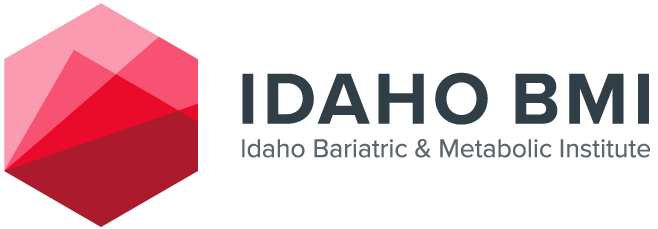100,000.
Since we’re talking heart disease this month, you may think that’s the number of annual deaths from it. It’s not.
Not close to it.
100,000 is just the gap between heart disease, the #1 killer in America, and the next most common cause of death. 700,000 people died last year of heart disease, continuing a decades-long trend that simply isn’t improving.
And the most common symptom is sudden death. Not much we can do after that happens!
Heart disease is such an important, deadly topic that one episode just wouldn’t be enough to cover it. So we’re doing two, starting with a fresh look at the cause of heart disease. Then, in a couple weeks, we’ll be back to tackle treatment and prevention.
What is Heart Disease?
We’ve talked a lot about inflammation in past episodes, and heart disease is really the direct result of it.
It’s an inflammatory chain reaction. Coronary artery disease (CAD) is the most common form of it and the most common road to heart attacks or cardiac events.
Now, while heart disease has its name for obvious reasons, a lesser known fact is that the hallmark signature of it – the narrowing of arteries – actually occurs throughout the body. The heart just gets the most attention because it’s working 24/7.
This narrowing is brought about by LDL cholesterol, specifically damaged LDL particles, migrating to the wall of the artery (we covered healthy vs. damaged cholesterol in a previous episode). And look, nobody on earth has perfect cholesterol. But there is a threshold. Too much damaged LDL, and your arteries pay the price, and if they do for too long, your heart will too.
12 Steps to a Heart Attack
Above are the broad strokes. What follows is a much deeper dive on the cause of heart disease, from the early, pre-symptom stages to the dreaded heart attack, which kills over 50,000 people a month.
1. Excess reactive oxygen species.
The mitochondria is the powerhouse of the cell. When we burn dirty fuel, these powerhouses still have to use it. Too many carbs, sugar and polyunsaturated fats generate ROS, or reactive oxygen species.
2. Oxidative Stress
Like cholesterol, ROS are not inherently bad. But too much creates oxidative stress. Think of rust, that same greenish-brownish process you see on older ships, abandoned cars and so on? Well rust is iron oxide, and that same harmful process can occur inside us with too much ROS.
3. NLRP3
That oxidative stress activates an inflammasome known as NLRP3, resulting in something you may have heard in COVID conversations – a cytokine storm. This has been shown in studies to be a primary driver of coronary artery disease.
4. Sialidase & Neuraminidase
These enzymes are very important in life. They become activated by NLRP3 which causes chemical reactions in the body.
5. Sialic Acid
Okay, a big one here:
- Sialidase & neuraminidase cut off sialic acid from proteins throughout the body. Used on cell surfaces, sialic acid is a key communicator in our bodies. This cutting damages the LDL cholesterol particle, making it easier to be oxidized. Because it’s damaged, it’s no longer recognized by our LDL receptor.
- The sialic acid cutting also damages the glycocalyx, a very small inner lining of our blood vessels. This damage to what is almost a protective carpet, makes the migration of bad LDL easier.
- Antibodies go on high alert due to the cutting of sialic acid, because of the body now perceiving more foreign intruders. They then become more likely to bind to these harmful invaders.
Stepping back a bit, the following steps come not just from scientific data, but hundreds of first-hand observations from Dr. Brown while performing surgery at Idaho BMI or Everest Surgical Institute.
6. Spleen & Filtration
Damaged LDL travels to the spleen, which acts as an excellent filter for us. It exposes our blood to immune cells including the macrophage. Think of this as a sort of Pac-Man, recognizing the damaged LDL and gobbling it up to destroy it.
7. Macrophage
The problem is, the macrophage keeps part of the bad LDL to share with the other immune cells (B & T lymphocytes), to spread the word so to speak. Well, that starts a cloning of antibodies to recognize and destroy that damaged LDL.
8. Spillover Effect
A healthy immune system is able to get rid of damaged LDL thanks to a normal spleen. But when the amount of bad LDL becomes too much, a ripple effect of damage occurs. Atherosclerosis and high inflammation begin, along with visceral fat, insulin resistance, even anxiety and high blood pressure.
9. Migration
Because of the accumulation of oxidized LDL particles, they migrate to the wall of arteries – and it’s easy for them, due to that damaged protective carpet, the glycocalyx, mentioned earlier. This damage is occurring in the arteries of many areas, not just the heart.
10. Narrowing
Over time, that damage becomes scarring and fibrosis in the cell wall. That scarring obviously takes up space, which means your arteries have less of it – they have narrowed.
11. Reduced Blood Flow
The coronary arteries supply blood to the heart. At this stage, they don’t do it well. Some people will have chest pain in this scenario because their heart muscle cells aren’t getting the oxygen they need.
12. Heart Attack
When the blood flow is so limited that heart muscle cells start dying (often in stress or physical activity), a heart attack occurs. Afterward, the heart tries to repair itself, but often forms scar tissue where muscle cells used to be. This can lead to heart failure, arrhythmia, remodeling and other issues.
And that’s the road to the most common cause of death in America. It’s not an enjoyable one, and not an enjoyable topic.
However, there is a ton of optimism for getting ahead of heart disease, and not even just from Dr. Brown. For decades, treatment has largely ignored prevention, and that’s where we as a society can make massive improvements.
This prevention, which can allow us to live longer while feeling better, will be the focus of Heart Disease Part 2 in just a couple weeks. Stay tuned!
You May Also Like

